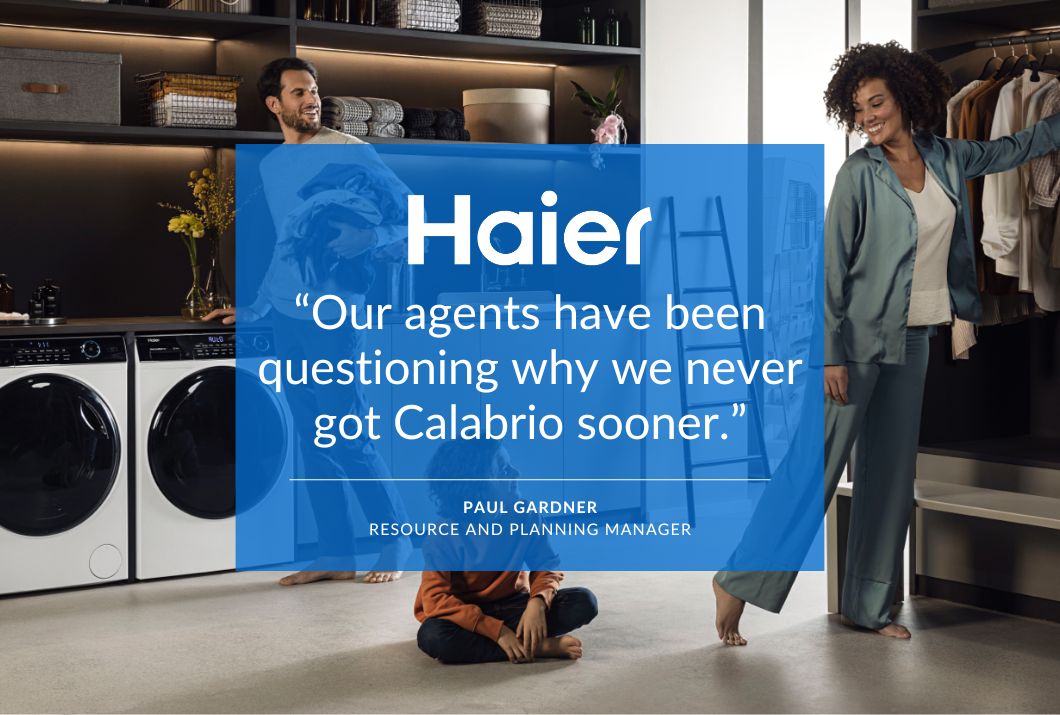Top 2016 Trend & Goal of WFM: Efficiency & Productivity
Top 2016 Trend & Goal of WFM: Efficiency & Productivity

In a survey conducted by Workforce Magazine, organisational efficiency was one of three major trends predicted for 2016. This was echoed by leading contact-centre analyst DMG Consulting. In fact, #1 on the DMG list of top enterprise servicing goals for 2016 was productivity and cost reduction, beating service quality for the first time.
So, managers are prioritising cost-containment initiatives and productivity this year, trying to find ways to slash operational costs while still delivering customer service rapidly and effectively. Not surprisingly, workforce process automation continues its march, gaining ground. Yet, the Workforce Magazine survey revealed that a whopping 35 percent of organisations still don’t embrace workforce automation. Instead, they still rely on antiquated, manual processes for workforce scheduling, time and attendance, absence and leave management, and labour analytics – with their employees still manually filling out paper time-sheets.
Over the years, I have seen contact centres spend considerable time entering data onto a payroll spreadsheet, challenged by hard-to-read handwriting and higher margins of error of manual processes. By simply automating payroll, many of them have reaped the immediate benefits of automation; not only in time savings but in greater accuracy.
Boost efficiency/productivity – with automated WFM
Organisations are at varying levels of automation. One thing is for sure: there’s no shortage in choice when it comes to solutions on the market for improving overall workforce efficiency and productivity. Today, automated workforce management (WFM) has become critical to the productivity of contact centres and service organisations employing hourly-wage earners.
In a nutshell, automated WFM improves efficiency and productivity. It forecasts the volume of various contact methods and schedules the number of agents accordingly – a complex juggling act – while taking into account agent skills, preferences, breaks, training, vacations and absences. It decreases idle time and rapidly fills unexpected shift vacancies, thus combatting the loss in productivity. WFM boosts agent adherence – a top metric of agent productivity – and customer satisfaction: inquiries are automatically routed to the agent with the most appropriate skills set for resolution. Organisations already using automated WFM should ensure it’s being utilised to its fullest potential. As you grow and as need dictates, your service provider often has add-on modules available for purchase.
Drive improvements – with workforce optimization (WFO)
Organisations are in search of WFO vendors that facilitate the implementation and integration of their capabilities with other operating and analytics solutions, thus increasing their investment benefits. What’s needed is for WFO vendors to introduce next-generation products, designed to easily interoperate with “big data” and the cloud. Calabrio offers open standards and integration ease, giving customers the freedom to select those sysems that match their needs or fo further build upon their current IT investments.
At Calabrio, we are proud to deliver one of the market’s most advanced, state-of-the-art WFO software. But even more important; we also provide outstanding post-implementation support, with a team of experts ready to jump in 24/7 – a huge benefit to customers which helps them secure efficiency improvements year after year.
Raise the bar – in real time
Workforce technologies that support real-time processes allow enterprises to manage their workforce much better. One example is the ability to identify productivity bottlenecks. Getting information in real-time, such as tracking the number of hours agents have been working, can avoid overtime and fatigue, thus improving overall productivity.
Another emerging real-time technology is speech analytics, used to identify sales/up-sell opportunities as well as identify unhappy and at-risk customers. Measures can then be taken to improve retention and the customer experience. According to DMG Consulting, this capability will be playing a part in the quality evaluation process of services rendered.
Create continual, positive agent experiences
A contact centre is only as good as its agents. Agents first walk through the door because of the promised paycheck but that alone won’t keep them in the long run. Workforces that are overworked or underused, and are using inflexible systems frequently suffer from high employee turnover. Opt for a WFM solution that allows employees to feel empowered by having a say in scheduling (e.g. self-service where they indicate schedule preferences), that offers incentives or game-like competition, that rewards excellent performance (e.g. first choice in days off, work remotely from home), and that provides performance feedback, skills training and coaching.
Furthermore, ensure your agents have the best tools and conditions so they can do their jobs efficiently and productively. An advanced customer-relationship management (CRM) solution gives quick and easy access to customer information, eliminating agents flicking through multiple screens and systems – frustrating to agents and customers alike. Choosing the right software to seamlessly integrate with all data points to ensure full 360-degree customer visibility is all the more paramount when using multi-channels. These tried-and-true approaches improve agent engagement, empowerment and satisfaction. The bottom line? Good staff morale makes for better performance, meaning higher productivity.
Perform exceptionally – in the Cloud
Cloud infrastructure and automation are driving numerous business technologies and are likely to feature prominently in WFM this year, according to a trends assessment by WFS (Workforce Software Company, Australia). Calabrio has provided cloud solutions for many years and in the last two years we have experienced a fantastic growth in demand for our cloud solutions. We expect this growth to further accelerate in 2016 and stand ready to provide a scalable service experience from our multi-tenant platform. Other contact centre application vendors are also heading to the Cloud to be able to provide their customers the flexibility required for rapid scaling with an expanding customer base or adding new features and updates online. Less expensive and easier to implement, cloud strategies are being adopted at record rates.
Stay ahead – stay competitive
One of the biggest challenges today is to deliver a consistently good experience across all channels. Customers increasingly expect a rich and personal journey, irrespective of channel – whether online, through their smartphone or a shop assistant. Your service scheduling software should be comprehensive; one that keeps customers in mind at every point of their process.This means managing the customer lifecycle from beginning to end, starting with customer inquiries and ending with completed service and satisfied customers.
Your contact centre applications will need to be open, run on industry-standard hardware and be seamlessly ingrained in your overarching structure and IT strategy. Transforming your contact centre into a hub that centrally manages the customer journey not only helps you in making real-time decisions based on data and context that better serve customers, but also helps you deliver on your objectives such as reduced overheads and increased revenue streams. In your efforts to maximise productivity and efficiencies in 2016, it will prove more essential than ever to select the right technologies that help you to achieve you goals and manage your costs.









